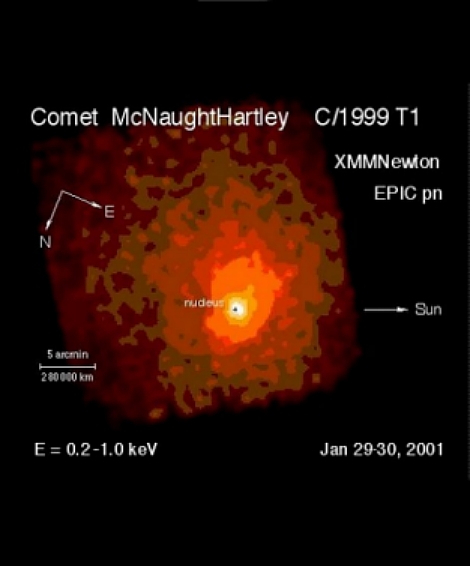
 Credit: ESA/K. Dennerl/B. Aschenbach
Credit: ESA/K. Dennerl/B. Aschenbach
A Snowball's Chance
Comets are sometimes called "dirty snowballs" since that's what they
resemble - they are composed of ice, snow, dust and rocks. Surprisingly
these "snowballs" are surrounded by a halo of X-ray producing gas. Since
X-rays usually imply extremely high temperatures, it may be that comets
simultaneously represent some of the coldest and some of the hottest
material in the solar system. These surprising cometary X-ray "halos" were
first
detected by ROSAT, while a Chandra
observation of X-rays around the comet C/1999 S4 (LINEAR) suggested
that the emission was produced by the capture of free electrons in the
solar wind. Now an
X-ray halo around the comet McNaught-Hartley has been observed by the
XMM-Newton X-ray observatory. The XMM-Newton image (shown above) and the
measured spectrum of the X-ray emission provide another piece of the
puzzling mechanism by which these frozen "snowballs" produce X-rays.
Last Week *
HEA Dictionary * Archive
* Search HEAPOW
* Education
Each week the HEASARC
brings you new, exciting and beautiful images from X-ray and Gamma ray
astronomy. Check back each week and be sure to check out the HEAPOW archive!
Page Author: Dr. Michael F.
Corcoran
Last modified April 16, 2001


